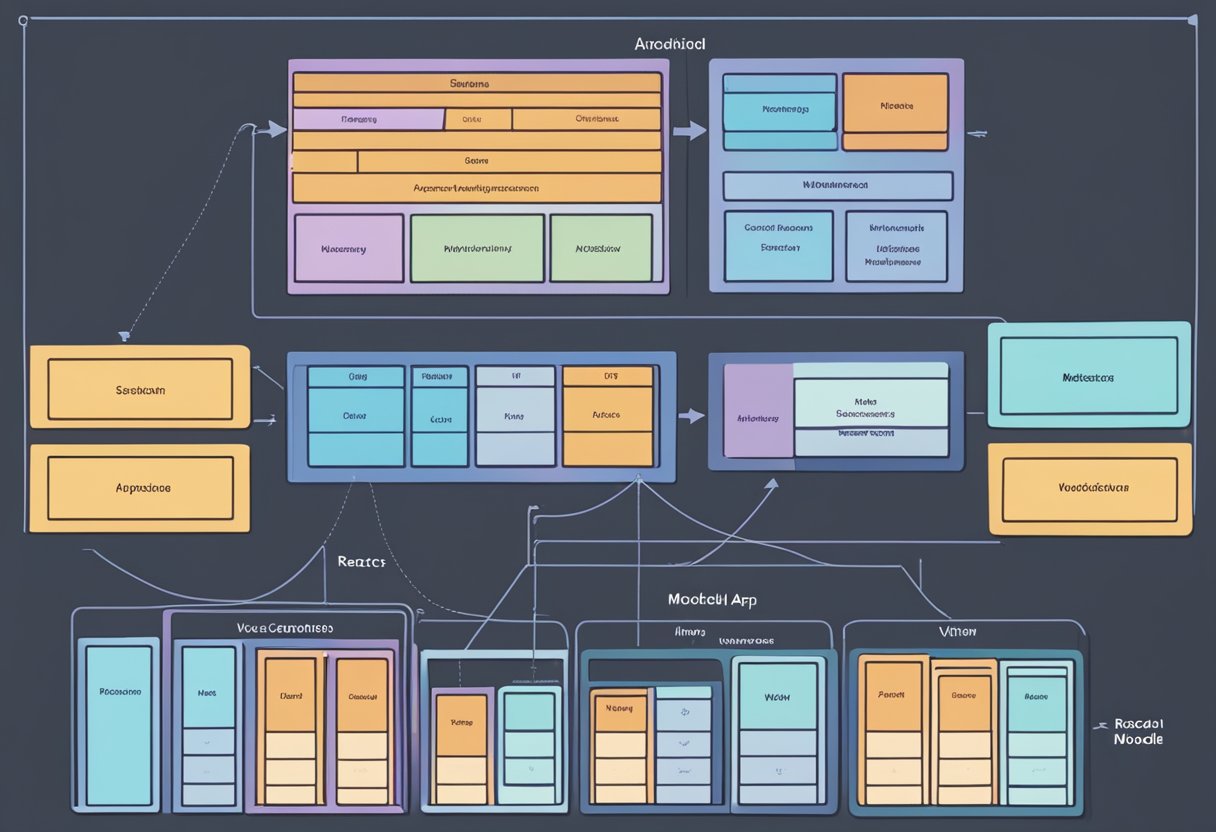React Native is a popular framework for building cross-platform mobile applications. It allows developers to create apps for both iOS and Android using a single codebase, which can save time and resources. However, building maintainable apps can be a challenge, especially as the codebase grows larger and more complex. This is where the Model-View-ViewModel (MVVM) pattern comes in.

The MVVM pattern is a design pattern that separates the presentation logic from the business logic of an application. It consists of three components: the Model, which represents the data and business logic of the app; the View, which represents the user interface; and the ViewModel, which acts as a mediator between the Model and the View. By using the MVVM pattern, developers can create more maintainable and testable code, as well as improve the overall architecture of their apps.
In this article, we will explore how to master the MVVM pattern in React Native. We will provide a step-by-step guide to building maintainable apps using this pattern, including how to create Models, Views, and ViewModels, and how to connect them together. Whether you are a beginner or an experienced React Native developer, this article will provide valuable insights into how to build better apps using the MVVM pattern.
Índice De Conteúdo
Understanding MVVM in React Native
MVVM Fundamentals
The Model-View-ViewModel (MVVM) pattern is a popular design pattern used in software development. It is particularly useful in building maintainable and scalable mobile applications. In React Native, MVVM is used to separate the application’s logic into three distinct layers: the model, the view, and the view model.
The model layer is responsible for managing the application’s data and business logic. The view layer is responsible for rendering the user interface. The view model layer acts as a mediator between the model and the view, providing a way for the view to interact with the model without having to know its details.
Benefits of MVVM for App Development
One of the main benefits of using MVVM in React Native is that it helps to improve the maintainability of the application. By separating the logic into distinct layers, it becomes easier to make changes to the application without affecting other parts of the codebase. This makes it easier to add new features, fix bugs, and make improvements over time.
Another benefit of using MVVM is that it helps to improve the scalability of the application. As the application grows in size and complexity, it can become difficult to manage all of the different components. MVVM provides a way to break down the application into smaller, more manageable pieces, making it easier to maintain over time.
Comparing MVVM with Other Design Patterns
There are several other design patterns that are commonly used in software development, such as Model-View-Controller (MVC) and Model-View-Presenter (MVP). While these patterns have some similarities to MVVM, there are also some key differences.
For example, in MVC, the controller is responsible for managing the interaction between the model and the view. In MVP, the presenter is responsible for this interaction. In MVVM, the view model acts as a mediator between the model and the view.
Overall, MVVM is a powerful design pattern that can help to improve the maintainability and scalability of React Native applications. By separating the application’s logic into distinct layers, it becomes easier to make changes to the codebase over time, without affecting other parts of the application.
Implementing MVVM in React Native
When it comes to implementing the MVVM pattern in React Native, there are a few key steps that developers should follow to ensure that their apps are maintainable and scalable. In this section, we’ll explore some of the best practices for implementing MVVM in React Native.
Setting Up the Development Environment
Before diving into MVVM implementation, developers should ensure that they have the necessary tools and dependencies installed on their development environment. This includes installing Node.js, React Native CLI, and any necessary packages such as React Navigation.
Structuring Your App for MVVM
To effectively implement MVVM, developers should structure their app in a way that separates the UI layer from the business logic layer. This can be achieved by creating separate folders for Views, ViewModels, and Models.
Creating ViewModels in React Native
ViewModels are responsible for handling the business logic of the app and communicating with the Views. In React Native, ViewModels can be created using either plain JavaScript objects or classes. Developers should ensure that their ViewModels are testable and maintainable by following best practices such as dependency injection.
Data Binding and State Management
Data binding is a key aspect of MVVM, and in React Native, this can be achieved using libraries such as MobX or Redux. Developers should ensure that their data binding and state management solutions are scalable and maintainable by following best practices such as using immutable data structures.
Navigation and routing are important aspects of any app, and in MVVM apps, developers should ensure that their navigation and routing solutions are separate from the business logic layer. This can be achieved using libraries such as React Navigation.
Testing MVVM Components
To ensure that their MVVM components are maintainable and scalable, developers should write unit tests for their ViewModels and Views. This can be achieved using libraries such as Jest or Enzyme.
By following these best practices for implementing MVVM in React Native, developers can create maintainable and scalable apps that are easy to maintain and update over time.

